Shawna Gilmore’s Peaceable Kingdom
Looking to fairy tales, myths, and other beloved imaginary landscapes for inspiration, Shawna Gilmore's works offer exuberant expression of the guileless sense of wonder that too often fades after childhood.

Former Mn Artists staffer Scott Stulen (now Curator of Audience Experiences and Performance at the Indianapolis Museum of Art), one of the founders of Walker Art Center’s Internet Cat Video Festival, discussed in a T.E.D. Talk some of the lessons he’d learned from the experience, noting the subversive appeal of hosting such an event at a serious institution. Regarding the unconventional juxtaposition of populist videos at a venue of “high“ art, he says, “allows for play; it’s about pleasure. And it’s about joy, generosity, and sincerity.”
Shawna Gilmore’s first solo show at the Duluth Art Institute, Land of Wonder, follows and widens these same possibilities, presenting a melange of imagery drawn from numerous sources: fairy tales, mythologies, elements from Russian folklore, Narnia, and other esoteric realms. The exhibition’s contents are as guileless and expressive as the wall of children’s art that precedes the formal exhibition of work on view.
While Minnesotans navigate dirty snow and the late winter whiplash of freezing temperatures and tantalizing warmth, the Duluth Art Institute (DAI) offers Gilmore’s gentle bears, stargazing deer, cherubic boys, geese, and girls in baby-doll dresses inhabiting imagined lands, together staring into a galaxy opened within a glade, or idling in verdant clearings. Tones of vermilion and emerald unify the works made specifically for this show, as viewers navigate a winding presentation of floating walls and cozy nooks. In a sweet curatorial touch, several of the works are placed at a child’s eye-level, softening their awe and bringing them face-to-face with Gilmore’s surrealistic acrylic paintings, like illustrations from an as yet unwritten book.
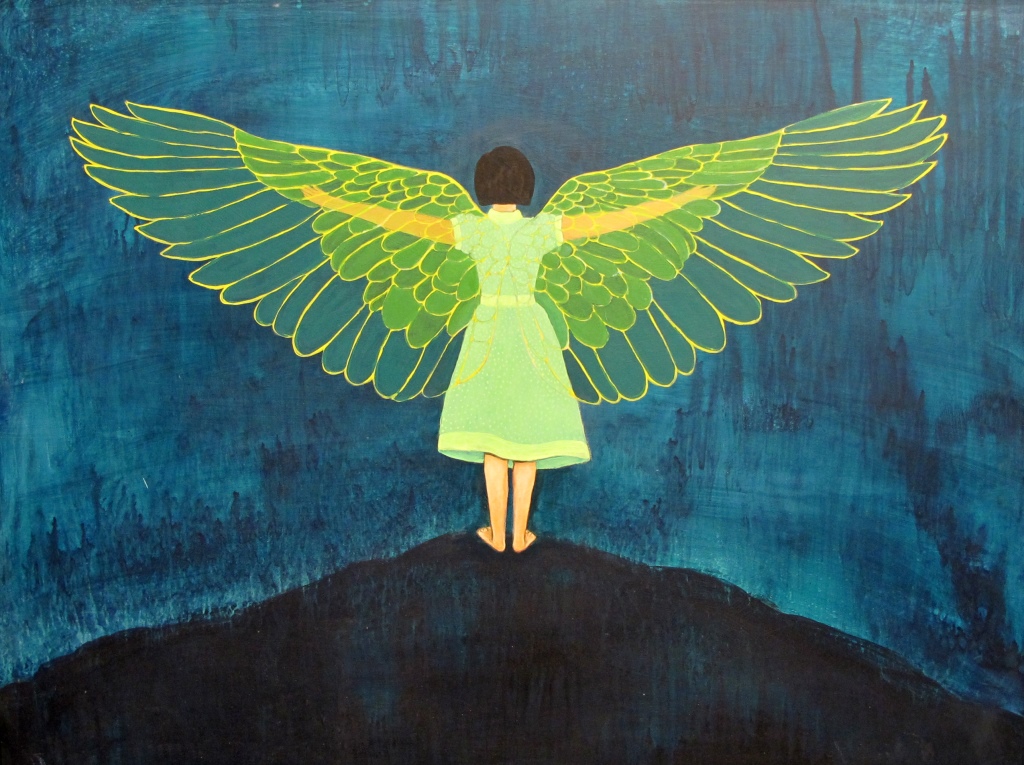
While visiting these works in the gallery with Gilmore, we sat on pillows on the floor, near a bench-full of fantasy novels and collected Grimm and other tales. She expressed frustration with the overwhelming intellectualism and remoteness of so much contemporary art, saying it’s as if having fun somehow makes one less of an artist worth consideration. Her subtle rejoinder is that it’s okay to laugh; that life is dark enough as it is without a capacity to step back, to play, and to wonder. She says her young son recently asked whether aliens were real. We live in a time when contingent, more nuanced answers about humanity’s place in the universe — and our relation to what some deem alien — are dearly needed.
Humor is a commodity that the fine art world typically avoids like a bacillus, unless it’s of the smarmy, snark-laden variety you find in Richard Prince’s Jokes or Jeff Koons’s hyperbolic Puppy. Yet Gilmore’s work is full of good-natured laughs, like a personal favorite included in the recent DAI membership show: an image of a boy baiting a bird-watching bear, aptly titled Don’t Poke The Bear While He’s Bird Watching. Her punningly titled Lapland, from the current exhibition, features the folds of a blouse housing sky and the good earth below with a mother bear and her cubs ambling happily alongside prancing rabbits.
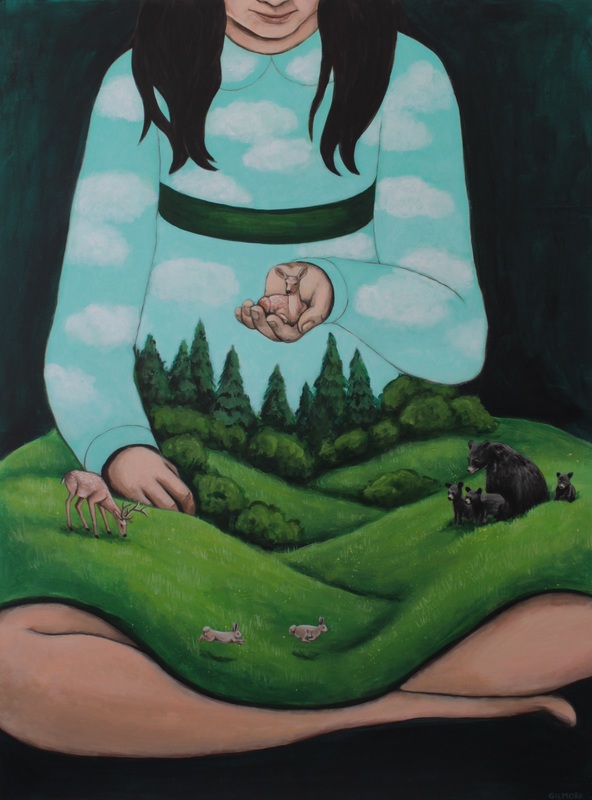
__________________________________
The winged girl on a precipice might be a feminine Icarus. The girl sailing in the swan in On the Shores of Swan Lake may be a nod to Leda. But Gilmore’s characters could just as well be referencing Lolita, Alice, or Dorothy. Multiple valencies pile up in the imagery to create an inexplicable, yet wholly quiescent world — a peaceable kingdom.
__________________________________
Gilmore’s works don’t lament innocence as a quality lost, but rather as one allowed to atrophy — still within our grasp if we can resist a need for certainty and prescribed meaning. Her representations prompt such curious questions as: What would a young girl and a bear have to say to each other (Speaking With Bears)? Or, why might masked pixies be circling a bonfire (Firelfies Around the Flame)? What possibilities might arise if we were to cede to ambiguity and become comfortable with less than absolutely knowing? I appreciate the trust she places in a viewer’s own imaginative capabilities.
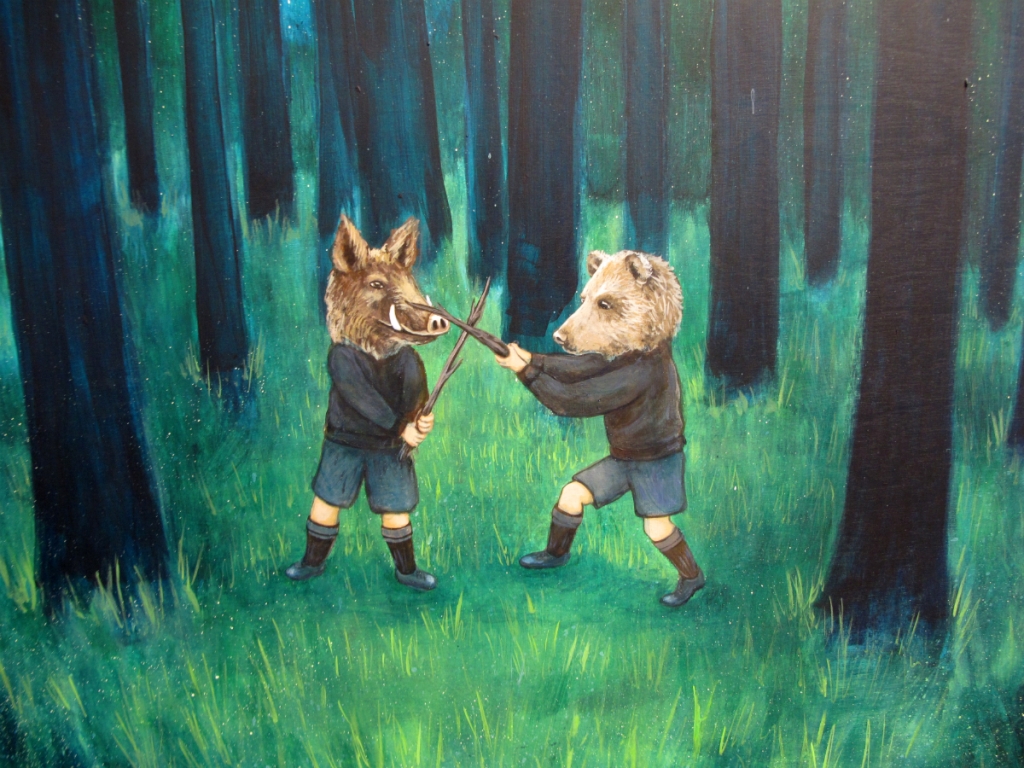
The content of her work exists in the space of often-told stories and myths. Yes, the winged girl on a precipice might be a feminine Icarus; the girl sailing in the swan in On the Shores of Swan Lake may be a Leda-like figure. Still, Gilmore’s characters could just as well be referencing Lolita, Alice, or Dorothy, albeit obliquely. Multiple valencies pile up in the imagery to create an inexplicable, yet wholly quiescent world — a peaceable kingdom. Gilmore reinforces a sense of alternative realities by framing many of her works with apertures: portholes, keyholes, and other devices that create a feeling of the liminal, as if the scenes we’re viewing exist at or between thresholds, where passage rites and similarly transformational ventures are at stake.
Shawna’s husband, Eddy, seems to share her fantastical, metaphorical sensibilities. Chapters in his recent memoir, The Emancipation of a Buried Man, include “My Bride’s Experience Down the Rabbit Hole,” and “There’s No Place Like Home.” In an essay from the book, titled “Unrelenting Joy and Peace as Winter Continues,” he remarks on being in the forest (the milieu for so many of Shawna’s works) as provoking “awareness, wonder, perception, delight, joy, enthusiasm, enlivened senses, and a reason for living.” It’s no surprise that the forests his partner creates likewise afford very similar experiences.
In a timely visit to Duluth last month, the agitprop group Guerrilla Girls advocated for “smaller art” — things made for more proximal audiences, intimate friends and loved ones. They posit that such work is even more necessary now, when the business of art has grown as slanted and slyly contrived in its interests as hedge funds and so-called securities. Working within a community of artists and audiences who know one another, who engage each other at the neighborhood co-op, bar, and other day-to-day venues keeps each acutely aware of the others’ needs and aspirations. In that vein, Gilmore’s is an art that DAI director Annie Dugan describes as clearly rooted somewhere — work that springs from and meaningfully belongs to a particular place.
Scott Stulen could have been citing work such as Gilmore’s when he said:
“When we have these moments of connection, (they’re sometimes) met with skepticism instead of embrace… (but) people really desire connection, community, and a place to share. And that’s the power of art. It’s the power of participation. It can deliver those moments of inspiration, of inquiry, of discovery, and joy — simple, sincere, un-ironic joy.”
That sentiment is as apt a description of Shawna Gilmore’s work as any I could possibly convey.
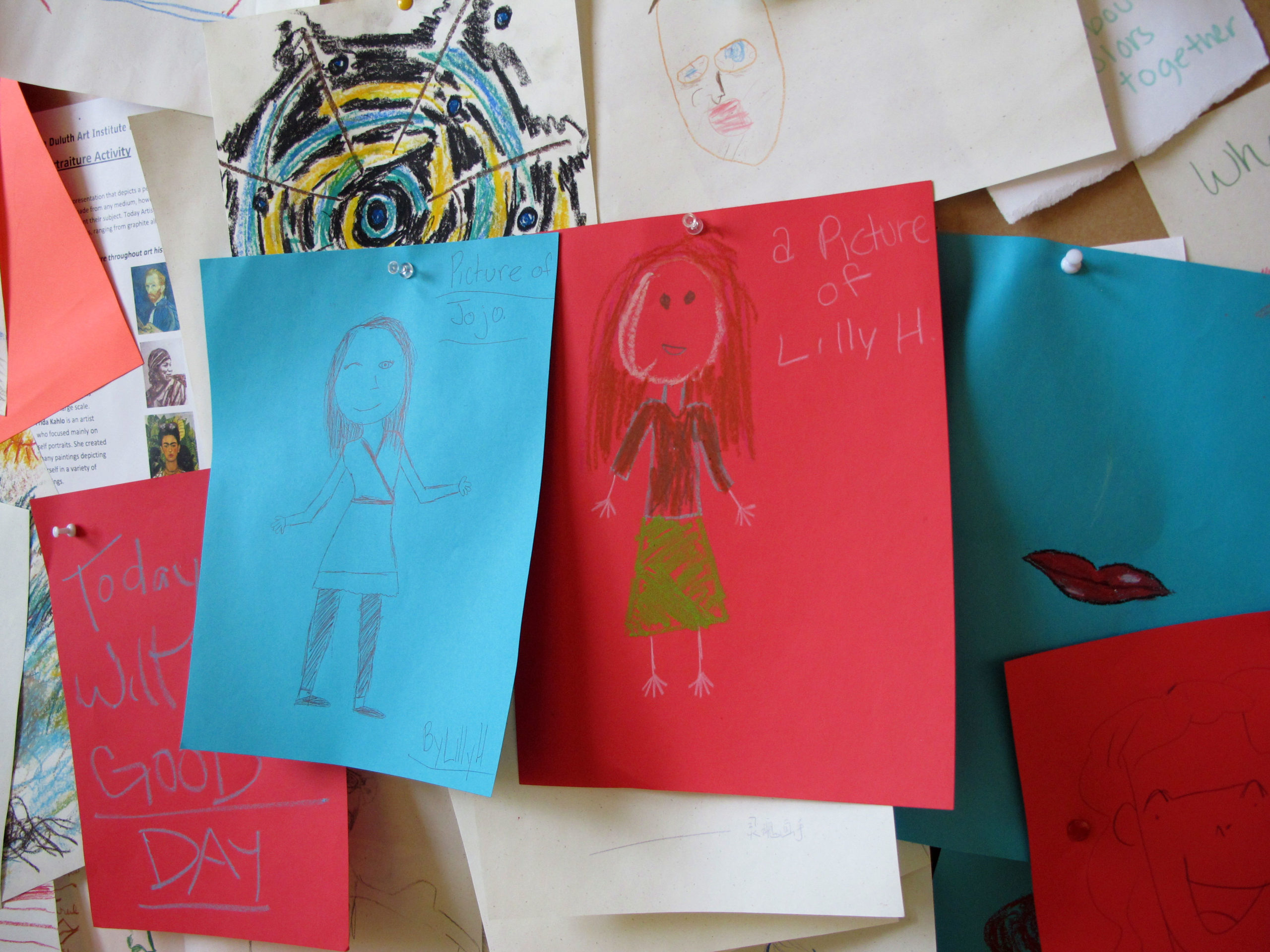
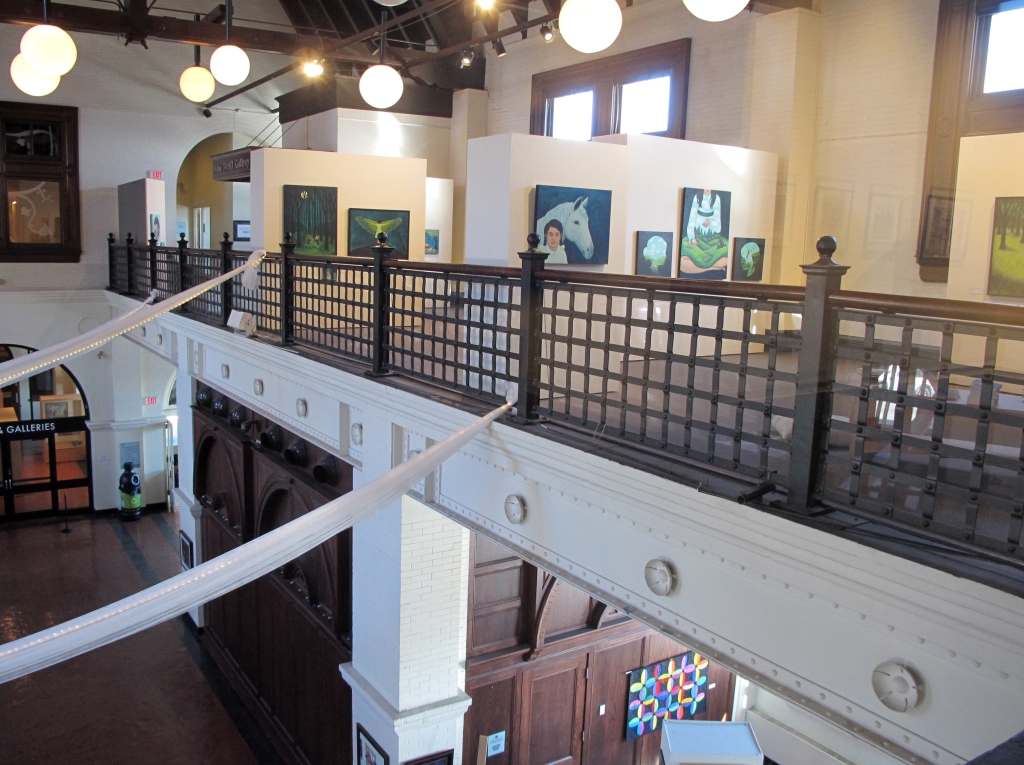
Related exhibition information:
Land of Wonder: New Work by Shawna Gilmore is on view at the Duluth Art Institute from February 11 through April 2, 2016. See more by the artist on her website: www.shawnagilmore.com.
Tim White is an artist, writer, and recently published his first book of photographs, In and Out of Context, in collaboration with 21 Northland poets, songwriters, and prose artists. He lives in Duluth, Minnesota.